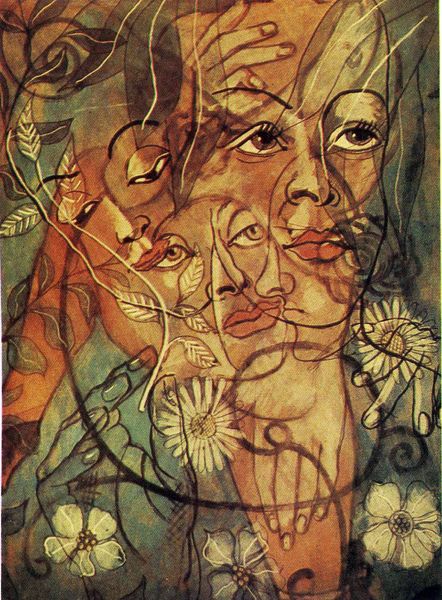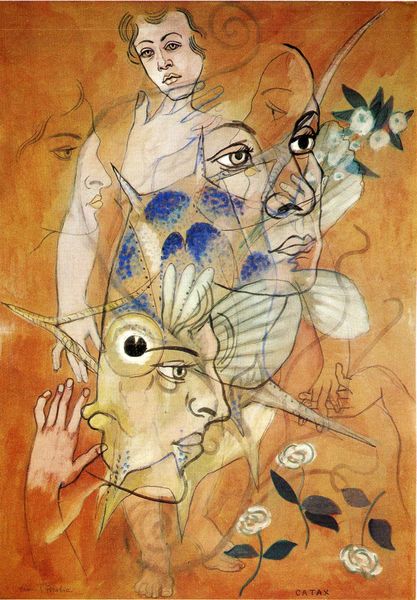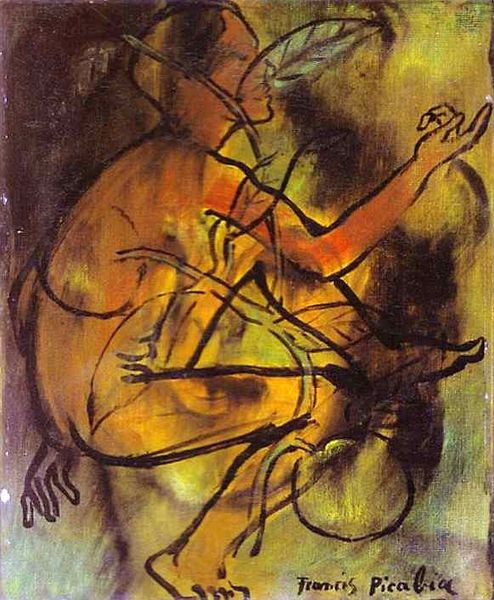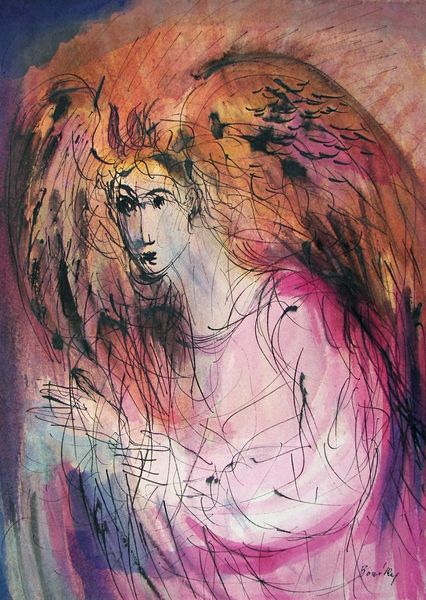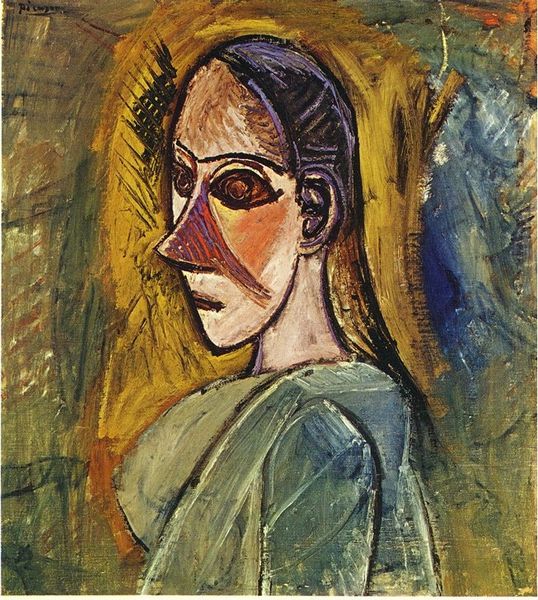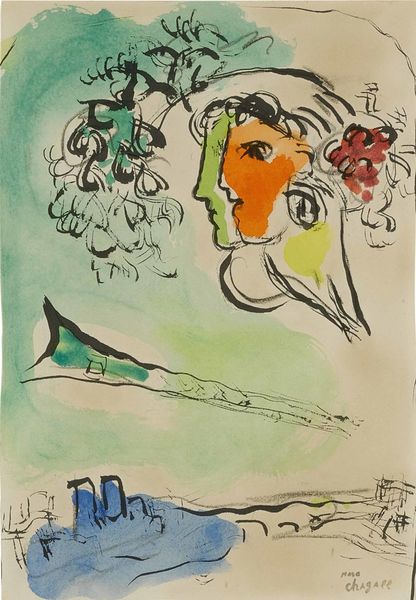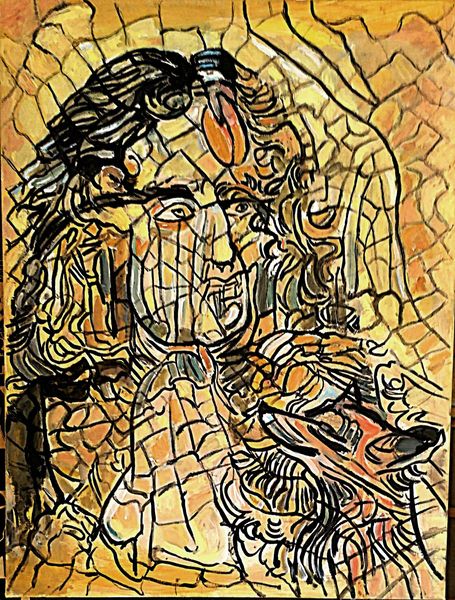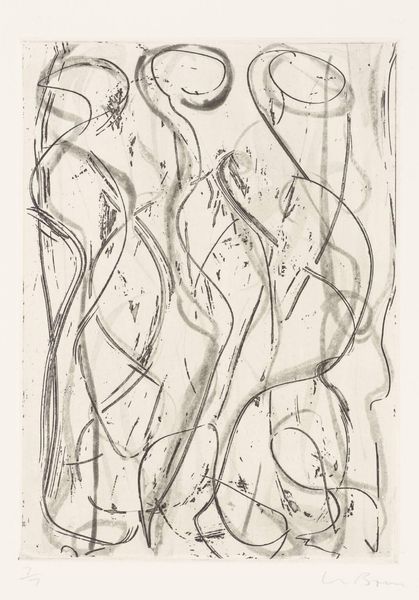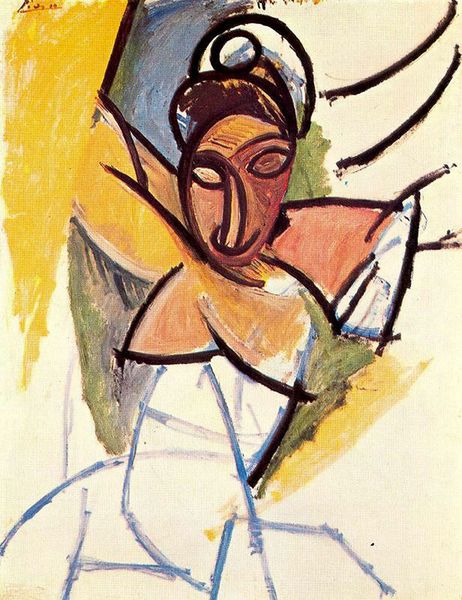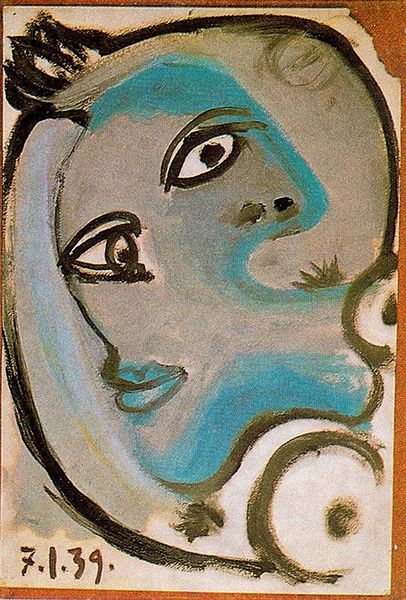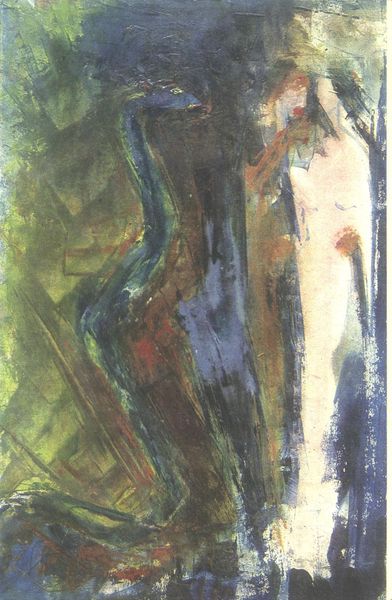
mixed-media
#
portrait
#
cubism
#
mixed-media
#
abstract painting
#
abstraction
#
surrealism
#
modernism
Dimensions: 104 x 74 cm
Copyright: Francis Picabia,Fair Use
Curator: Looking at this intriguing mixed-media piece by Francis Picabia, titled "Ridens," from 1929. Editor: The first thing that strikes me is how layered it is, like a collage in paint. It’s chaotic but also delicate, all these transparent images floating together. Curator: Yes, Picabia’s experimentation with layering is very present here, reminiscent of his earlier forays into Cubism and his later engagement with Surrealism. Observe the way he superimposes different motifs. Editor: Right, like this wispy figure over a sharply drawn face, and what appears to be some kind of botanical element. It seems deliberately disjointed, almost haphazard, in its making. Was he using traditional oil paints, or something else? Curator: Picabia often incorporated diverse media to challenge conventional painting. This, of course, reflects a Dadaist approach, embracing chance and the readymade. Note how he seems to apply thinned washes over very linear draughtsmanship; the juxtaposition produces some tension. Editor: I see the line work as being quite graphic, but these washes—the textures—hint at some type of rapid mark-making, as if Picabia valued the physical process and material transformation involved in producing the composition. The visible texture feels almost performative. Curator: Certainly. Semiotically, we can unpack how these combined images act like visual puns or rebuses. The eye is led around the surface through fragmented representations to deconstruct meaning and to highlight the act of seeing itself. Editor: Interesting, how process-oriented the semiotic act became here, almost merging mind and material; it encourages us to actively consider the making, the assembly, and thus the underlying politics of consumption and appreciation. Curator: Precisely. In short, "Ridens" becomes an exercise in destabilization, questioning established art conventions by denying the stability of form and content, leaving us suspended. Editor: Suspension might be right, not just in its aesthetic but material processes—it prompts me to reflect on the physical act, labor, and historical context that influenced the artist. Thanks.
Comments
No comments
Be the first to comment and join the conversation on the ultimate creative platform.

